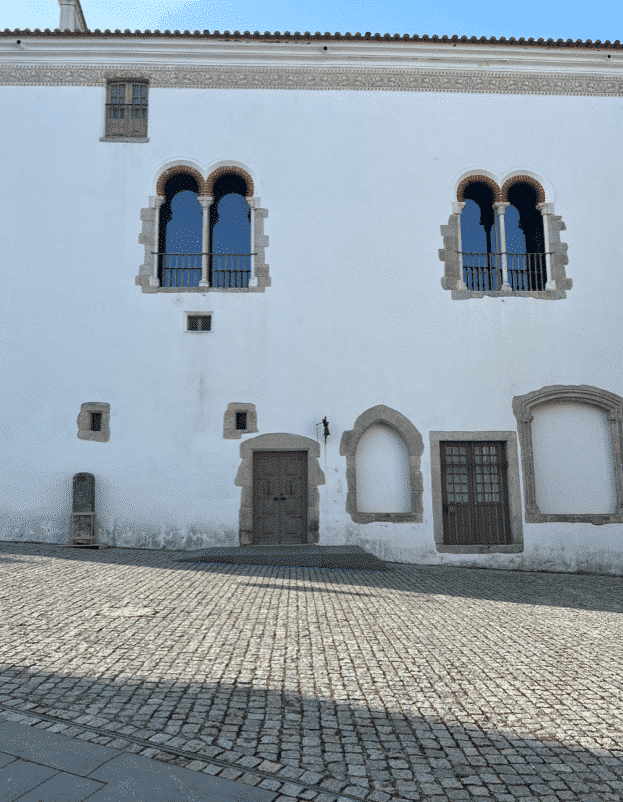Located in the heart of Portugal’s Alentejo region, Évora is a city steeped in history and culture. Among its many architectural treasures stands Paço de São Miguel, an imposing 16th-century palace that serves as testimony to the city’s rich past. This article explores this fascinating site and provides insights into its historical significance.
The History of Paço de São Miguel
The construction of Paço de São Miguel dates back to the beginning of the 16th century during King Manuel I’s reign, a period known as the Age of Discoveries. The king commissioned it for his son, Infante D. Luís (Prince Louis), who was then Archbishop of Évora.
This magnificent building reflects Manueline architecture – a style unique to Portugal during King Manuel I’s reign which blends Gothic and Moorish elements with maritime motifs reflecting Portugal’s overseas explorations at that time.
Architectural Highlights
Paço de São Miguel boasts several noteworthy architectural features worth exploring. Its façade showcases intricate stone carvings representing religious themes and symbols associated with Prince Louis’ ecclesiastical role.
The interior reveals beautifully preserved azulejos (traditional Portuguese tiles) adorning various rooms, depicting biblical scenes or geometric patterns typical for their era. A grand staircase leads visitors up to lavishly decorated chambers where high-ranking clergy once resided.
A Haven for Art Lovers
Beyond its stunning architecture, Paço de São Miguel also houses significant art collections from different periods in Portuguese history. These include Flemish tapestries from the 16th century and valuable paintings by prominent artists such as Cristóvão Lopes and Gregório Lopes dating back to the Renaissance era.
The palace even hosts some Roman-era artifacts discovered within its premises, adding another layer to its historical richness.
The Palace as an Educational Center
In the 19th century, Paço de São Miguel began a new chapter in its history when it was converted into a seminary for educating clergy. This role continued until the mid-20th century when the palace became part of the University of Évora. Today, it houses several departments and serves as an important research center.
Visiting Paço de São Miguel
While not all areas of Paço de São Miguel are open to public due to its ongoing use by the university, guided tours can be arranged through local tourism offices or directly with the University of Évora. These provide a unique opportunity to explore this historic site and learn about Portugal’s rich cultural heritage.
No visit to Évora would be complete without spending time at Paço de São Miguel – a living monument that embodies Portugal’s Age of Discoveries and offers visitors an unforgettable journey into Portuguese history and art.
Frequently asked questions
What is the historical significance of Paço de São Miguel in Évora?
The Paço de São Miguel, also known as the Palace of Dukes of Cadaval, holds a significant place in Portugal’s history. It was constructed in the 14th century and has been home to several noble families since then. The palace showcases an impressive blend of architectural styles from Gothic to Renaissance, reflecting its long history and various periods of construction and renovation. Its proximity to the Roman Temple gives it further historical importance.
What are some notable features or attractions at Paço de São Miguel?
The most striking feature is perhaps its unique architecture that combines different styles across centuries. Inside, visitors can explore rooms filled with antique furniture, family portraits, tapestries, and other historic artifacts. The Chapel of Bones (Capela dos Ossos) is another attraction within this complex; it’s a small chapel decorated with human bones! Adjacent to the palace lies a beautiful garden that offers stunning views over Évora city.
How can I visit Paço de São Miguel? Is there any entrance fee?
To visit Paço de São Miguel in Évora you’ll need to get tickets for entry which typically cost around €5 per person but might vary depending on special events or exhibitions taking place during your visit time. You may want to check their official website or contact them directly for up-to-date information on visiting hours and ticket prices.
Can I take photographs inside the Palace?
In general photography without flash is allowed inside most areas of the palace including its gardens. However certain sections such as private rooms or art exhibits may have restrictions due to preservation concerns so always ask staff before taking photos.
Is there any guided tour available at Paço de São Miguel?
Yes, guided tours are available at Paço de São Miguel. These tours offer a deeper insight into the palace’s history and significance. They are often led by knowledgeable guides who can share interesting stories about the palace and its former inhabitants. It’s highly recommended to take one of these guided tours to fully appreciate this historic site.












